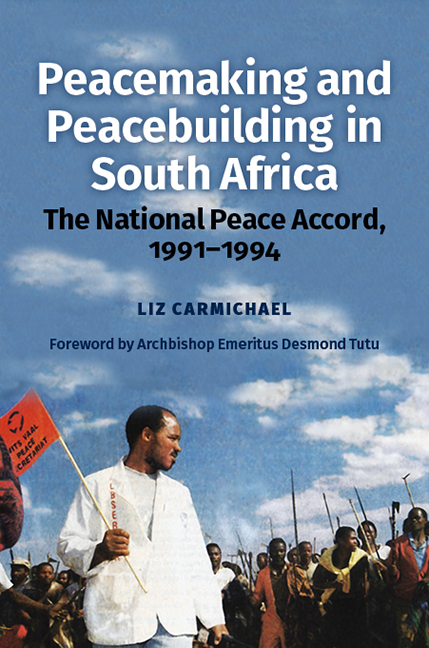Book contents
- Frontmatter
- Dedication
- Contents
- List of Illustrations
- List of Abbreviations
- Glossary
- Acknowledgements
- Note on Nomenclature
- Transition Timeline
- Foreword
- Introduction
- Part One Peacemaking, Peacebuilding, and the South African Conflict
- Part Two Peacemaking
- Part Three Peacebuilding
- Conclusion: Impact and Unfinished Business
- Bibliography
- Index
2 - South Africa’s Fractured Rainbow
Published online by Cambridge University Press: 08 October 2022
- Frontmatter
- Dedication
- Contents
- List of Illustrations
- List of Abbreviations
- Glossary
- Acknowledgements
- Note on Nomenclature
- Transition Timeline
- Foreword
- Introduction
- Part One Peacemaking, Peacebuilding, and the South African Conflict
- Part Two Peacemaking
- Part Three Peacebuilding
- Conclusion: Impact and Unfinished Business
- Bibliography
- Index
Summary
Introduction
This chapter traces the arrival of South Africa's unique mix of races and ethnicities, the birth of a single nation under white minority rule, the coming of apartheid, the turn to violence in 1960–61 and the beginning in 1976 of an inexorable movement for change.
The land and people
South Africa is strikingly diverse: a land of high rolling grasslands, spectacular mountains, endless semi-desert, lush semi-tropical hills, winelands and gold mines, stretching from the cold Atlantic to the warm Indian Ocean, from the tropical Limpopo to the storm-lashed rocks of Cape Agulhas.
A few of the San or ‘Bushmen’, remain. As hunter-gatherers they inhabited southern Africa unchallenged for at least 50,000 years, leaving rock paintings and ‘click’ languages. Within the past 2,000 years groups of cattle-owning ‘Bantu’ farmers migrated from central Africa, forging iron and building villages in the interior and down the eastern coast. Khoe hunter-gatherers and pastoralists, related to the San, populated the western Cape.
European explorers appeared in 1488 when Bartholomew Diaz, seeking a trade route to Indonesia, made landfall at Mossel Bay. In 1580, Francis Drake's expedition described the Cape as: ‘a most stately thing and the fairest cape we saw in the whole circumference of the earth’. In 1652 white settlement began when the Dutch East India Company established a fort and vegetable garden at the foot of Table Mountain. Dutch, German and French Huguenot settlers flowed in, enclosing the Khoe's lands and absorbing the people into a burgeoning slave population taken from Angola and the entire rim of the Indian Ocean: Indonesians, Malays, Bengalis, east Africans and Madagascans. The mixing of all these races created the ‘Coloured’ people, still living mainly in the Cape. The Afrikaans language developed as a local form of Dutch, spoken by whites and Coloureds. Its white speakers acquired the name of ‘Afrikaners’ (Africans).
Britain briefly occupied the Cape in 1795, establishing permanent rule in 1814, bringing merchants, missionaries, prospectors, and a liberal constitution with a colour-blind voters’ roll.
- Type
- Chapter
- Information
- Peacemaking and Peacebuilding in South AfricaThe National Peace Accord, 1991-1994, pp. 17 - 32Publisher: Boydell & BrewerPrint publication year: 2022



